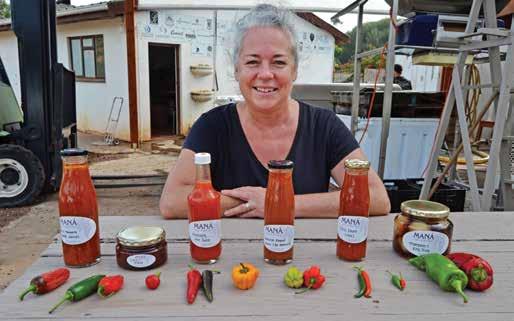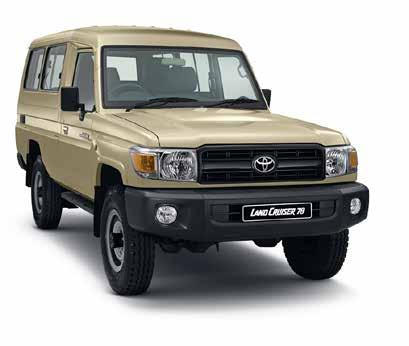3
www.thevillagenews.co.za
10 March 2021
Environmental rock stars in Antarctica Writer Elaine Davie
I
f this planet is ever to be saved from the shambles we’ve created, it’s going to depend on our youth, and to inspire them we need young environmental rock stars to lead the way.” This was the thought that drove well-known adventurer and explorer, Riaan Manser of Betty’s Bay to launch his five-year ‘Matrics in Antarctica’ project.
“You can tell people until you’re blue in the face that because of the wanton, wholesale felling of 350-year-old giant Redwood trees, fertile soil by the ton is washing into the ocean, but until they see it for themselves, as I have done, it will have no meaning. So that’s the main objective of this project, to expose young people to the damage being inflicted on the earth and the importance of protecting it,” he explains. For the past two years Riaan had been planning his own trip to Antarctica, following in the footsteps of the early explorers, but then along came Covid-19. “When it became clear that I would have to put those plans on hold, I decided to make use of the knowledge I had already accumulated and to do something aimed at developing environmental warriors for the future.” With his characteristic enthusiasm, drive and energy, he had soon sold the idea to a range of partners, from Professor Jonathan Jansen, who became the project’s patron, and a team from Stellenbosch University, to the Minister of Education, Angie Motshekga; Minister of the Environment, Forestry and Fisheries, Barbara Creecy and a number of funders with deep pockets. The next step was to launch a call for applications from matrics around the country. Applicants were required to compose an answer of no longer than 100 words to the question, ‘Saving the planet is a global issue, but what would you do in your own community to make a difference?’ The deadline was November last year. “We weren’t necessarily looking for the top student in the class, or someone who was studying maths or science,” explains Manser. “We wanted to be moved by the applicant. We needed to see a sincere message of concern for the environment, expressed in very few, but powerful words.” Students from approximately 400 schools submitted between 4 000 and 5 000 applications, with girls predominating four to one. After an exhaustive – and exhausting – process of elimination, the judges were able to whittle down the numbers to 10 finalists. The top five would go to the Antarctic and the five runners-up
would participate in an exciting environmental programme at De Hoop Nature Reserve. Finally, the excited winners, each from a different province, were announced – Ayakah Melithafa, Centre for Science and Technology, Khayelitsha, Western Cape; Boiketlo Lamula, Sedaven High School, Gauteng; Cobus Burger, Höerskool Duineveld, Northern Cape; Kelby Barker, Diocesan School for Girls, Eastern Cape and Thea Earnest, Mountview Secondary School, KwaZulu-Natal. Together they represented a diversity of personality types, each with strengths and skills of their own, but all were passionate lovers of nature, with a strong desire to restore and protect the environment. After the winners were announced, they faced their first challenge. Instead of grabbing their bags and jumping straight on to the plane, they had to endure two weeks of Covid isolation in Cape Town. But, let’s face it, if you get to spend them in the luxury Table Bay Hotel, that’s a pretty good deal. And certainly they weren’t left to twiddle their thumbs. Thanks to the coordinating efforts of Delecia Davids of Stellenbosch University, they participated in a full programme of talks, videos and workshops to prepare them for the trip. Then, at last, it was 26 January and after a final Covid test, it was A for away, their emotions swinging wildly from suppressed excitement to trepidation. The logistics company ALCI would be flying them in to Novolazarevskaya where there is an airstrip on a rocky outcrop close to the Russian and Indian research stations. The flight was six hours long in howling wind. Riaan describes this as potentially the most dangerous part of the expedition, because if the pilots are dealing with head winds all the way, they might conceivably run out of fuel. Fortunately, everything went smoothly and they made a perfect landing on the ice. “The kids stepped off the plane and were absolutely gobsmacked. The expressions on their faces at that moment were enough to make the whole trip worthwhile for me,” laughs Riaan. The guest house, known as Oasis, consisted of three well-insulated wooden cabins and they spent the first day settling in. Accompanying the five matrics were Riaan, Maryke Musson, a marine biologist in charge of the Two Oceans’ education programme, Professor Fadli Wagiet from Stellenbosch University, all of whom had been on the selection panel, and two film-makers to video the expedi-
tion. The programme of activities had been carefully designed by Delecia to make maximum use of the time available, but needed to be flexible enough to fit in with the weather. Unfortunately, the group could not visit any of the research stations or meet the scientists, because of the dangers of Covid, but they were able to log onto them online and explore the data they had collected and the projects they were working on. The weather station, for example, has been recording data since the 1800s; since then, the temperature has increased by 3.7oC, half of that in the past 20 years. An activity they were not expecting was picking up and separating throw-away waste (yes, in the Antarctic), mainly metal objects and building materials, like nails – the detritus of earlier construction at the bases. Highlights included a night of camping in tents on the ice, swimming in 0.3oC water and climbing partway up a vertical ice wall, 30 to 40 metres high which had been formed over a period of thousands of years. But perhaps what excited them most was a spectacular flight organised by ALCI across the continental shelf. And then, suddenly, too quickly, six days had passed and they were heading back home. As Riaan points out: “They will never forget this experience; it will have a dramatic effect on how they see the world from now on. I think what struck me most was the enormous personal growth that occurred in each of them in that short period of time – especially in self-confidence. This and their deeply-felt gratitude for this opportunity was what emerged very strongly in the reports they wrote afterwards.” Now they are all on a country-wide road show to share their insights and to spread the word about the 2021 tour. The deadline for entries will probably be around July/August this year. Keep an eye on www.matricsinantarctica.co.za for updates.
TOP: Camping out for even one night on the ice is not for the faint-hearted, but is an experience the young environmentalists will never forget. ABOVE: Iced lollies of a different kind for Kelby and Boiketlo. LEFT: Explorer-adventurer Riaan Manser whose brainchild the ‘Matrics in Antarctica’ project was, accompanied them on the expedition. BELOW: Antarctica at last! The five adventurers disembark at the Russian research station at Novolazarevskaya. From left are Ayakha Melithafa, Thea Earnest, Boiketlo Lamula, Kelby Barker and Cobus Burger. PHOTOS: Supplied






















